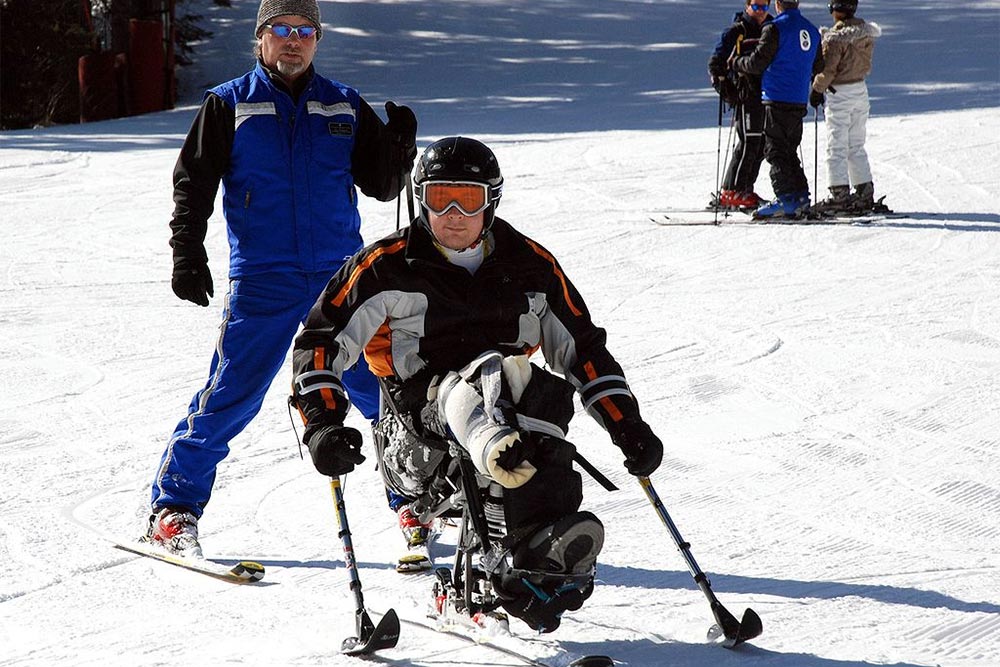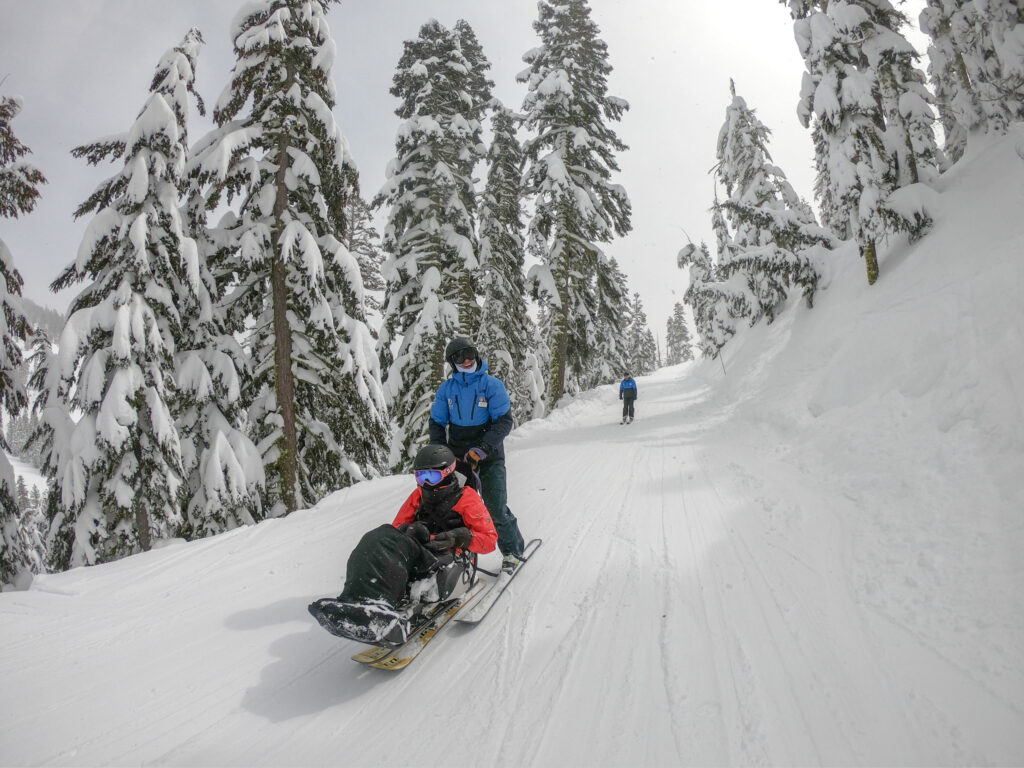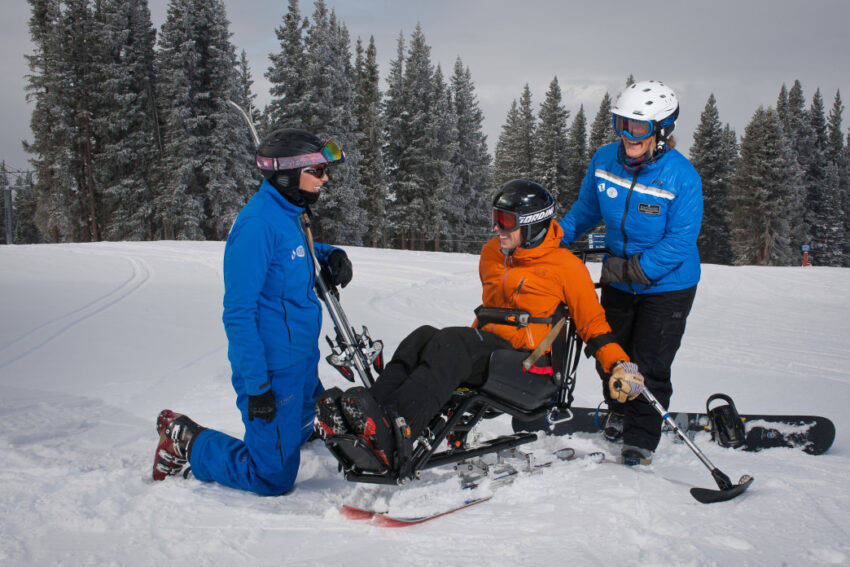Written by Candy B. Harrington, Emerging Horizons, December 18, 2021
Winter brings to mind images of snowmen, ski slopes and icicles. And although wheelchairs and snow don’t necessarily mix, there are many pieces of adaptive ski equipment that can help everyone hit the slopes. Of course the type of equipment and adaptations vary depending on each individual’s ability; but here’s a good overview of what’s generally available at adaptive ski schools across the US.

Stand-up Skiing
Stand-up adaptive skiing is classified by the number of tracks left in the snow — two-track, three-track and four-track. Two-track skiers use two skis, but adaptations like tethering to the instructor help steer the skier. Three-track skiers use one ski and two outriggers. The outriggers are ski poles with ski tips on the ends, which help the skier steer and balance. Four-track skiers use two skis and two outriggers.
Two-track skiing is suitable for anyone who can stand, and does not require outriggers to maintain their balance. It’s generally a good choice for people with cognitive or sensory disabilities, or for folks with a mild physical disability. Three-track skiing is the go-to pick for single leg amputees, while four-track skiing can generally be done by anybody who uses a cane or crutches.
Sit Down Skiing
Even if you can’t stand it’s still possible to ski with a mono-ski or a bi-ski. The mono-ski is a molded shell that’s mounted on a single ski. Two outriggers are used to maintain balance and help steer the mono-ski. This adaptive device is a good choice for folks who have good upper body strength and some trunk mobility.

CLICK HERE for more Accessible Skiing Information
